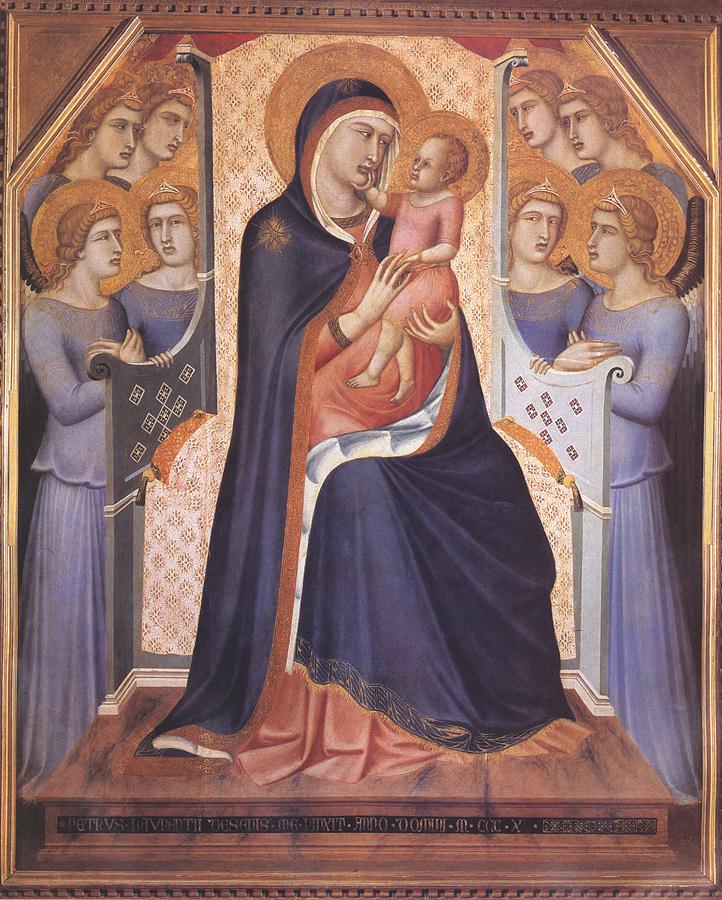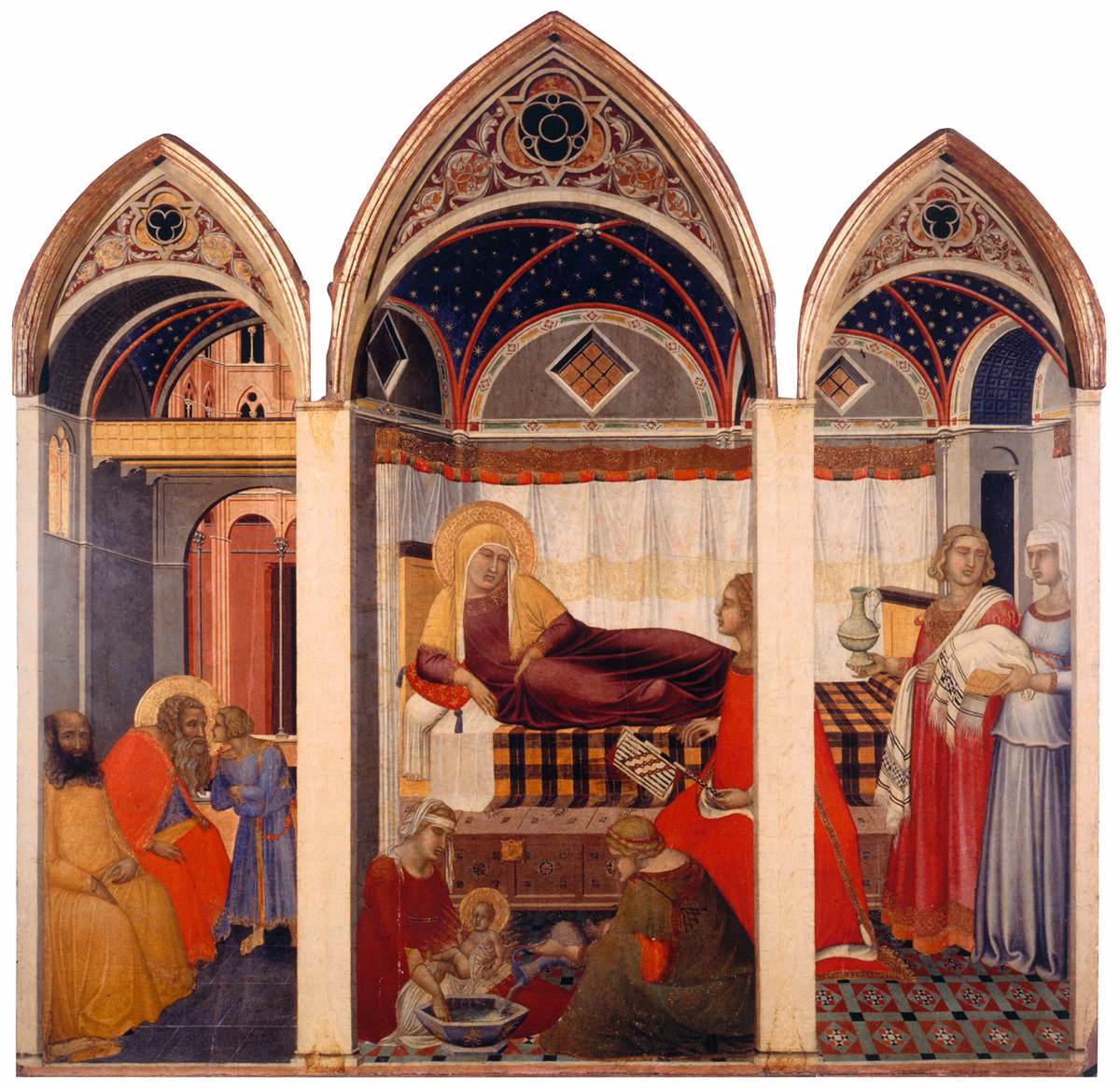The last documents referring to fourteenth-century painter Pietro Lorenzetti are dated between 18 September 1344 and 19 February 1345. They relate to the sale of some land he had bought a few years earlier on behalf of the sons of another artist, the sculptor Tino da Camaino. The documents regarding this sale are among the very few which refer to the artist and his work.
As documents are scant, Pietro Lorenzetti’s birth date is unknown. However, he must have been a relatively well-established master by the early 1310s, when he was commissioned several frescoes in the Lower Church of St Francis in assisi: first a fictive triptych for the Chapel of Cardinal Napoleone Orsini, then an elaborate cycle of the Passion of Christ in the main body of the left transept. Underway in 1315, this work is striking for the inclusion of illusionistic devices such as the fictive chairs underneath the Crucifixion scene. Lorenzetti’s starry skies were was a great source of inspiration for painters of the following generation such as Taddeo Gaddi.
In the following years Lorenzetti worked in Arezzo, realizing several commissions which reveal his creative approach to the influence of the two great painters of the previous generation, Duccio and Giotto.
Lorenzetti then returned to Siena. On 27 June 1326 he was paid 26 lire for frescoes in the Opera del Duomo, within the Cathedral precinct. He also realized a now-dismembered panel for the Carmelites, a religious order which claimed to have its roots in the Ancient Testament and therefore to be the most venerable of all. Lorenzetti succeeded in giving a visual form to the Order’s propagandistic conceit.
In the following years Pietro, his brother Ambrogio and Simone Martini were engaged to paint the façade frescoes for the Hospital of Santa Maria della Scala in front of the cathedral, a rare case in which different painters were asked to work independently on single scenes within a larger fresco cycle. By this point Pietro must have been a recognized public figure in Siena, as in 1337 he was able to obtain the right to bear arms from the Civic authorities.
His later works in the city reveal his willingness to experiment with space. For example, a signed Virgin and Child Enthroned with Angels now at the Uffizi uses the structure of the Virgin’s throne and the monumentality of the figures to create three-dimensionality, while the amount of space given to the traditional golden background is cut down to a minimum.
Lorenzetti relied on this experience while painting his last surviving panel, the San Salvino Altarpiece for Siena Cathedral. Documents reveal a very interesting detail of the making of this painting: in December 1335 a grammar teacher known as ‘maestro Ciecho’ was paid to translate a text telling the story of Saint Sabinus’ life from Latin to the vernacular, so that it could be used to decide what to represent in the predella of this altarpiece. The work’s central panel is fascinating for its detailed reproduction of a contemporary room whose windows cleverly open onto the golden background traditionally employed in medieval altarpieces.
Reference: H. B. J. Maginnis. “Lorenzetti.” Grove Art Online. Oxford Art Online. Oxford University Press, http://www.oxfordartonline.com/subscriber/article/grove/art/T051928pg1.
Panoramic view of the frescoes in the Lower Church of Assisi. 1320-40, fresco. Source: Web Gallery of Art.
Detail of the illusionistic seats below the crucifixion in the Lower Church of Assisi. 1320-40, fresco. Source: Wikimedia Commons.
Adoration of the Magi, c. 1340, tempera on wood. Musée du Louvre, Paris. Source: Web Gallery of Art.
Madonna Enthroned with Angels, 1340, tempera on wood. Galleria degli Uffizi, Florence. Source: Web Gallery of Art.
Crucifixion, fresco. San Francesco, Siena. Source: Web Gallery of Art.
Predella panel: Hermits at the Fountain of Elijah,1328-29, tempera on wood. Pinacoteca Nazionale, Siena. Source: Web Gallery of Art.
St Sabinus before the Roman Governor of Tuscany, 1335-42, egg tempera on wood. National Gallery, London. Source: Web Gallery of Art.
The Birth of Mary, 1342, tempera on wood. Museo dell’Opera del Duomo, Siena. Source: Web Gallery of Art.








